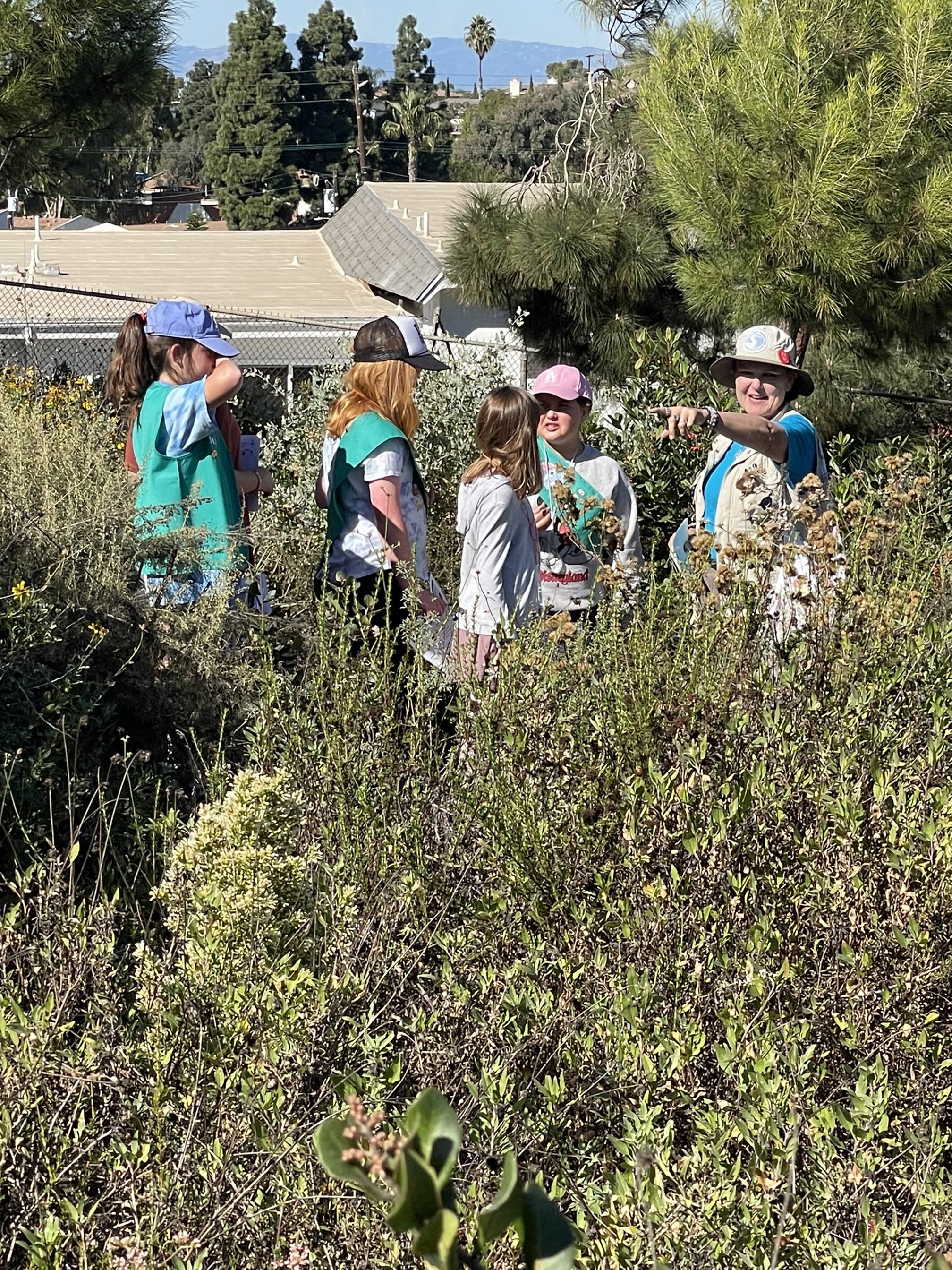A Walk With Junior Naturalists at Wilderness Park
By: Katie Hunt (Linked In)
As a kid growing up in the South Bay, I remember Hopkins Wilderness Park as one of the few local places that seemed wild. Even though visitors can get a striking view of downtown LA from the park’s highest point, it feels removed from the urban sprawl just beyond the fence.
I got my first taste of overnight camping with my Girl Scout troop at Wilderness Park many years ago, which ignited my interest in the outdoors. Nowadays, I love camping and hiking with my family. So I was excited to participate in a nature walk at the park through South Bay Parkland Conservancy’s Junior Urban Naturalist Program (JUNP)—I’d get to see how outdoor education has evolved at a formative place for me.
On a clear Sunday in November, I joined Mary Simun near the park’s front gate to start our adventure. SBPC Board Member, Educator & Biologist, Mary founded JUNP in 2022 and manages all educational programming for SBPC.
“So many of us in the South Bay think of ‘nature’ as something that you have to drive an hour or two to access,” Mary told me. “But we live in the middle of it. I wanted the Junior Urban Naturalist Program to help children become more aware of and engaged with the native animals and plants and other life that might be right in their own backyards.”
The rest of our nature walk group happened to be six local Girl Scouts, decked out in their badge-studded green vests and sashes, along with some troop moms. Mary started by giving each of them the essential naturalist tools: a hand lens for observing and booklets for note taking.
Mary told the girls that they’d engage all their senses; she’d ask what they saw, smelled, touched, heard, and maybe even tasted. And we did indeed get to taste something—when Mary spotted an invasive wild radish, a thin-stemmed plant with purple flowers, she pulled it from the ground and passed out bits of its flowers for each of us to try. Sure enough, it had the peppery bite of a radish root.
The radish presented a perfect opportunity to talk about the walk’s theme: habitat. (Mary gives each walk a specific, often seasonal, focus.) The radish didn’t belong among the native plants of the park’s chaparral habitat, which have adapted to Southern California’s dry summers and wet winters. Conservancy volunteers are working to replant areas of the park with native species, which nurture native butterflies, birds, and other species that have evolved along with those plants.
Throughout the walk, Mary directed our attention to the species that defined each of the park’s regions—the fragrant California sagebrush (Artemisia californica) in the chaparral, the songbirds and evergreens in the (nonnative) temperate forest, the dragonflies and turtles by the pond.
But mostly, Mary asked questions, as promised: What do you see? What do you hear? How is chaparral soil different from forest soil? What does this leaf smell like? Her excitement and experience (I learned later she had decades of classroom and field teaching experience with middle and high school students as well as elementary) showed through and inspired the girls to ask questions of their own: Can you eat sap? What do dragonflies eat?
At the end of the walk, we sat down on shaded benches, and Mary asked the girls to draw their own ideal habitats. They spent some time pondering the right size of pond for one girl’s vision—big enough so that fish and turtles would have room for their babies, but not so big that they’d get lost.
Another park visitor walked over to our group to show us a lime-green praying mantis perched on his finger. Mary transferred the insect to a tree, and the girls gathered around, giggling and saying, “Don’t touch it!” and looking through their hand lenses. I remembered doing the same thing with my fellow Girl Scouts, feeling giddy at the chance to look up close at something new and strange together. Wilderness Park has new native habitats and programs, but fortunately, some things haven’t changed.
Join Mary for the last walk of 2023 HERE
Sign up for SBPC’s newsletter to learn about future walks and events
Contributions to support SBPC educational programming in the South Bay are always appreciated

